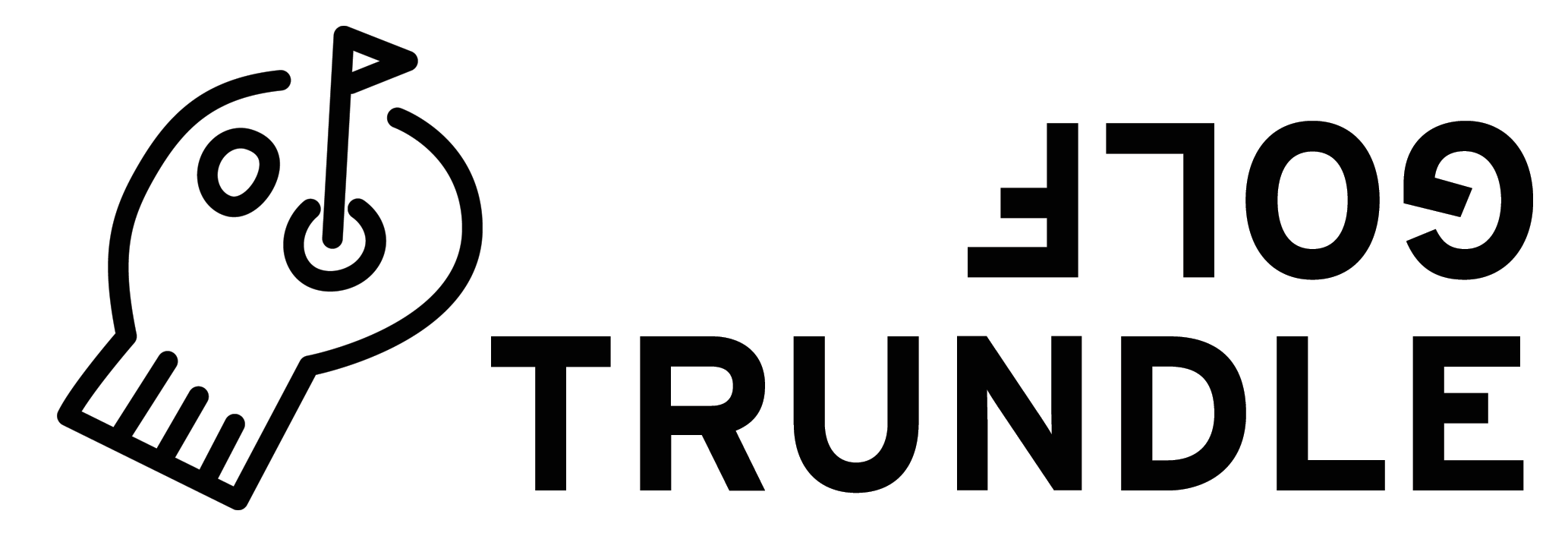
“Limitation makes for power: the power of the genie comes from its confinement.”
Richard Wilbur
What goes into a golf course design? The shapes of the land. The way those shapes frame the view. The placement of fairways, greens, and hazards. The way those choices frame the view. The setting and surrounds. The flora certainly and the fauna occasionally. And the routing—the path as described by the route from the tee to the green and to the next tee and so on.
By this description, every course is unique. And possibly every routing is unique, though they draw from a kit: the out-and-back, the double loop, the “army golf,” the switchbacks, the doglegs, “long,” “short,” and “home.” The sum of those elements can be compressed visually. Under compression that shape can take on the qualities of a thumbprint: the whorls, dashes and gaps that represent that particular walk through to the green and over that particular swatch of the earth. To further the analogy, there is a level of compression that reflects the unique routing without losing the most essential information—where the routing probably can be identified by someone who knows it well. The pursuit of that higher level of compression is where the “racetrack” view of a course came from.
Compressed shapes have power. Trademarks and logos that use the fewest lines or shapes possible are an example. Visual memes are another example—they are usually compact in geometry or time—but they are a massive compression of meaning. And the compression also results in a kind of encryption. Usually the message isn’t available to all viewers. You really have to know what you’re looking at to look at it at all.
The inspiration is obvious: gearheads have for years stuck stark vinyl outlines of racetracks the the windows of their cars. Maybe these cars haven’t actually made track times on Nürburgring or Spa or Leguna Seca, but they’re definitely a compressed communication of interest. To most they’re an abstraction; to the indoctrinated, every turn leaps out from from four lanes over.
That inspiration is perhaps less obvious: the conquests documented by military victory marking that documented sorties or kills. (Enjoy this visual summary of these on aircraft and naval vessels.)
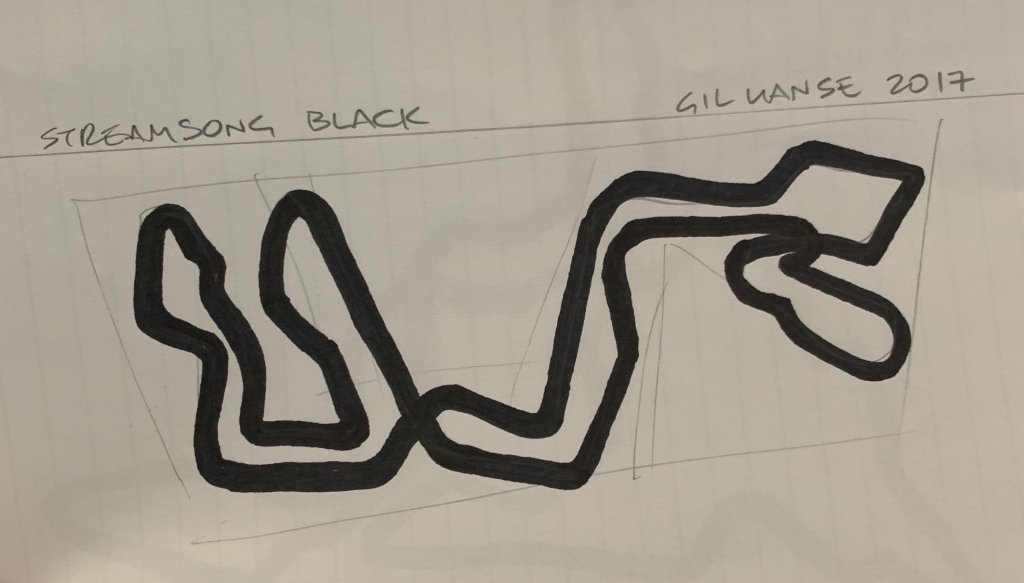
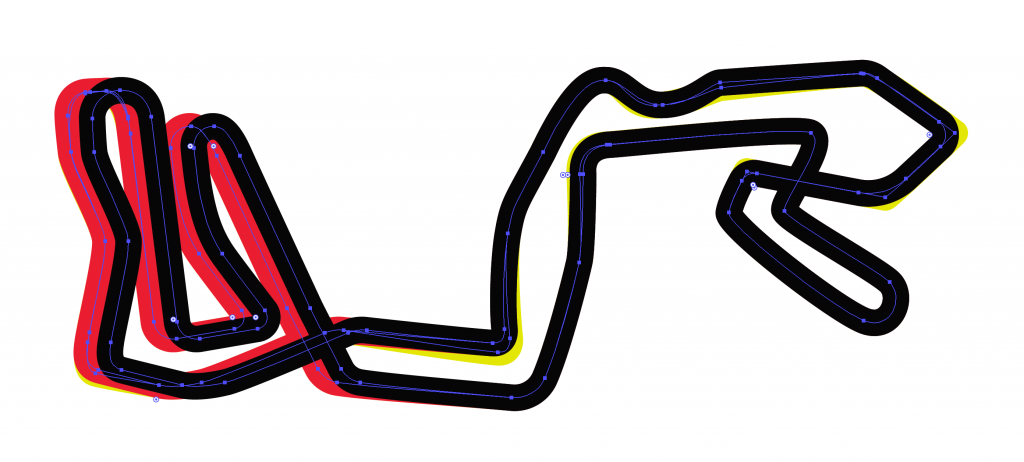
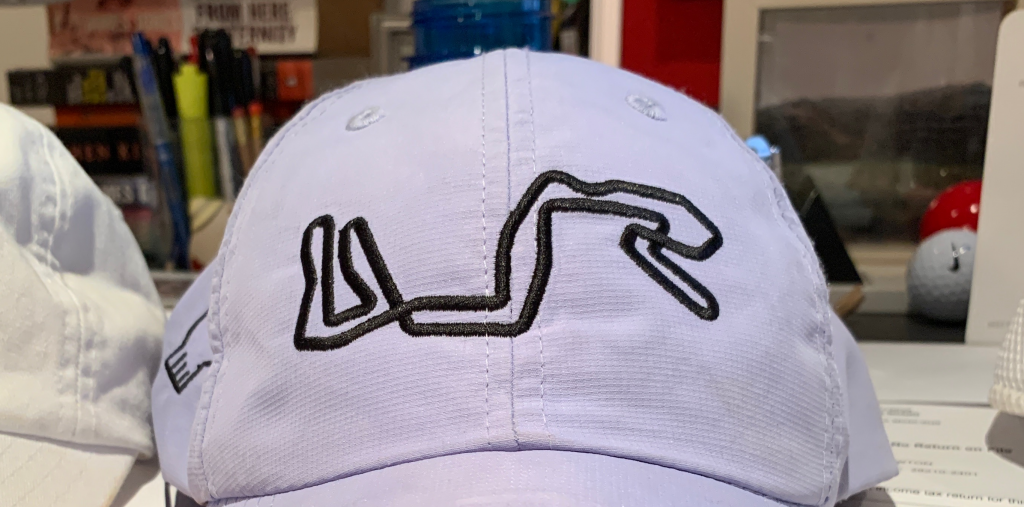
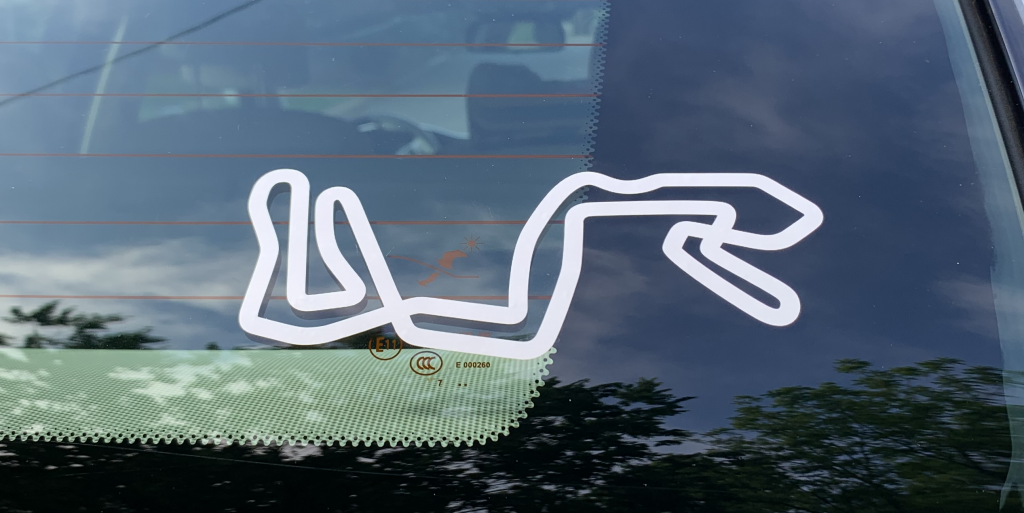
That’s what Racetrack Routings are all about: finding the simplest unique outline that captures a course. The result is a coded souvenir—a form of belt-notcher’s victory mark. And it’s not necessary to shoot par to take one home for the nose cone. Golf courses have often been called “tracks” and “loops.” And like a race track, for just about every routing the end takes us back to the beginning.
